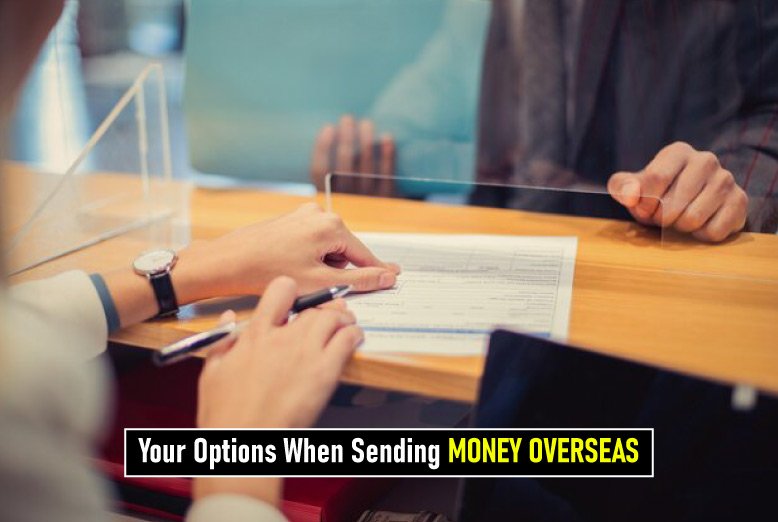What are your options if you’re in the United Kingdom and need to send money to Pakistan or the other parts of the world, especially Asia Pacific region? They essentially boil down to banks, remittance services, and online money remittance apps.
Bank-to-Bank Transfers
Bank-to-bank transfer is an electronic fund transfer (EFT) from one bank to another. One bank sends money, and another bank receives it.
The following are the typical steps involved in bank transfers:
- Initiate the transfer through your bank. Go to your bank branch or use the bank’s online banking app or web services portal.
- Fill out the bank transfer form. Provide the bank with the recipient’s name and contact information (address and phone number). Fill in your recipient’s bank account details, including their bank account number and bank code: Bank Identifier Code (BIC) or Society for Worldwide Interbank Financial Telecommunication (SWIFT) code.
- The bank verifies the information you provided. If you’re using the money in your bank account, the bank ensures your account has sufficient funds for the transfer. Your bank checks your transfer, sender and receiver information to ensure they are correct and to safeguard against fraud. Upon approval of your fund transfer request, the bank debits your account for the amount you’re transferring.
- The bank sends out a payment order. Your bank initiates the transfer by sending a payment order via the SWIFT network.
- The receiving bank verifies the payment order and confirms that it has the recipient account specified in the transfer. The receiving bank also verifies the order for legitimacy and to guard against fraud.
- The bank credits your recipient’s account using its own money. If everything is in order, the receiving bank deposits the money into the recipient’s account, and that money becomes available for the recipient to withdraw and use as they want.
- The originating bank pays the receiving bank. The actual fund transfer from the originating bank to the receiving bank occurs only after the recipient’s account has been credited with the money.
Bank-to-Bank Transfers: Domestic Transactions?
Technically, bank-to-bank transfers are domestic transactions. In a bank transfer, the transfer instructions are routed through local EFT networks like Automated Clearing House (ACH) or Single Euro Payments Area (SEPA).
That said, domestic or overseas bank transfers are all the same for ordinary banking clients. It’s just sending money through banking channels.
For you, an international bank transfer involves going to your local bank branch (or using the bank’s website or mobile app) and requesting a transfer of a particular amount from your bank account to your recipient’s account with an overseas bank. This time, your transfer request will not be routed through ACH or SEPA, which is for local bank-to-bank transfers. Instead, it will go through the SWIFT international messaging network.
All these take place in the back end, however. When you send money via bank transfer, the process – as it looks from your end – is exactly the same whether you’re transferring money domestically or internationally. Therefore, you won’t really know – or care – how your money gets transferred to your recipient’s bank account. All you’re concerned about is that it does.
Remittance Services
Remittance companies are a good choice if you or your recipient has no bank account. Just go to the nearest branch of your preferred remittance company, fill out the remittance order forms and pay for your transfer and fees with cash. Like banks, remittance companies also provide web portals or remittance apps.
To send a remittance via a remittance company, do the following:
- Initiate the remittance through the remittance company branch, website or app. You may have to provide identification to satisfy Know Your Customer (KYC) requirements. Choose a remittance company that operates in both the sending and receiving countries.
- Provide the remittance details: the transfer amount, your recipient’s name and address, and your preferred delivery option (e.g., direct-to-bank, cash pickup, mobile money).
- Pay for the transfer. You give the remittance company the amount you’re sending plus any fees.
Remittance companies may use different channels to transmit money internationally. If you choose direct bank deposit as your preferred delivery method, you will need a SWIFT code – the same code a bank needs when processing bank-to-bank transfers. Otherwise, remittance companies will use their own network to process remittance requests electronically.
Remittance companies can transmit funds from one agent branch to another anywhere in the world within seconds or minutes if you designate cash pickup and mobile money as your delivery method. If you choose the direct-to-bank deposit option, your transfer may take longer to complete – i.e., two to five business days, which is how long it takes to make a global bank transfer. That makes sense, though, because money transfer companies use the same network that banks do (i.e., SWIFT) to facilitate direct-to-bank transfers.
Online Money Transfer Apps
There are financial technology startups that provide digital remittance services through mobile apps. They are the most convenient option when it comes to international remittances.
To send money overseas using a digital remittance app, you typically have to do the following:
- Open your online remittance app. You must have a registered and verified account to continue.
- Choose your recipient country. Choose the country from the list of countries to which the app can send money.
- Add the receiving party’s information: name, bank account number (if depositing to a bank account), mobile money account details (if transferring money to a digital wallet), and any other information called for. This may vary according to your chosen delivery method.
- Double-check the information you entered into the app. If everything’s correct, submit your transfer request.
Online money app transfers are fast and convenient. Transfers are usually instantaneous; even bank transfers may be completed within the day. You can also access the app and send money anytime. Additionally, apps provide various payment options; you can pay for your transfer using your mobile money, credit card and bank account.
Send Money to the Philippines
Money transfer to the Philippines can be done through bank transfer, a remittance service or an online money transfer app. Bank transfers are the most secure, but they take time. Remittance services are faster, except when you’re doing a direct-to-bank deposit. Online money transfer apps are the quickest and most convenient international remittance option; they may be the best choice if an in-demand holiday destination awaits your payment for your room reservation.















